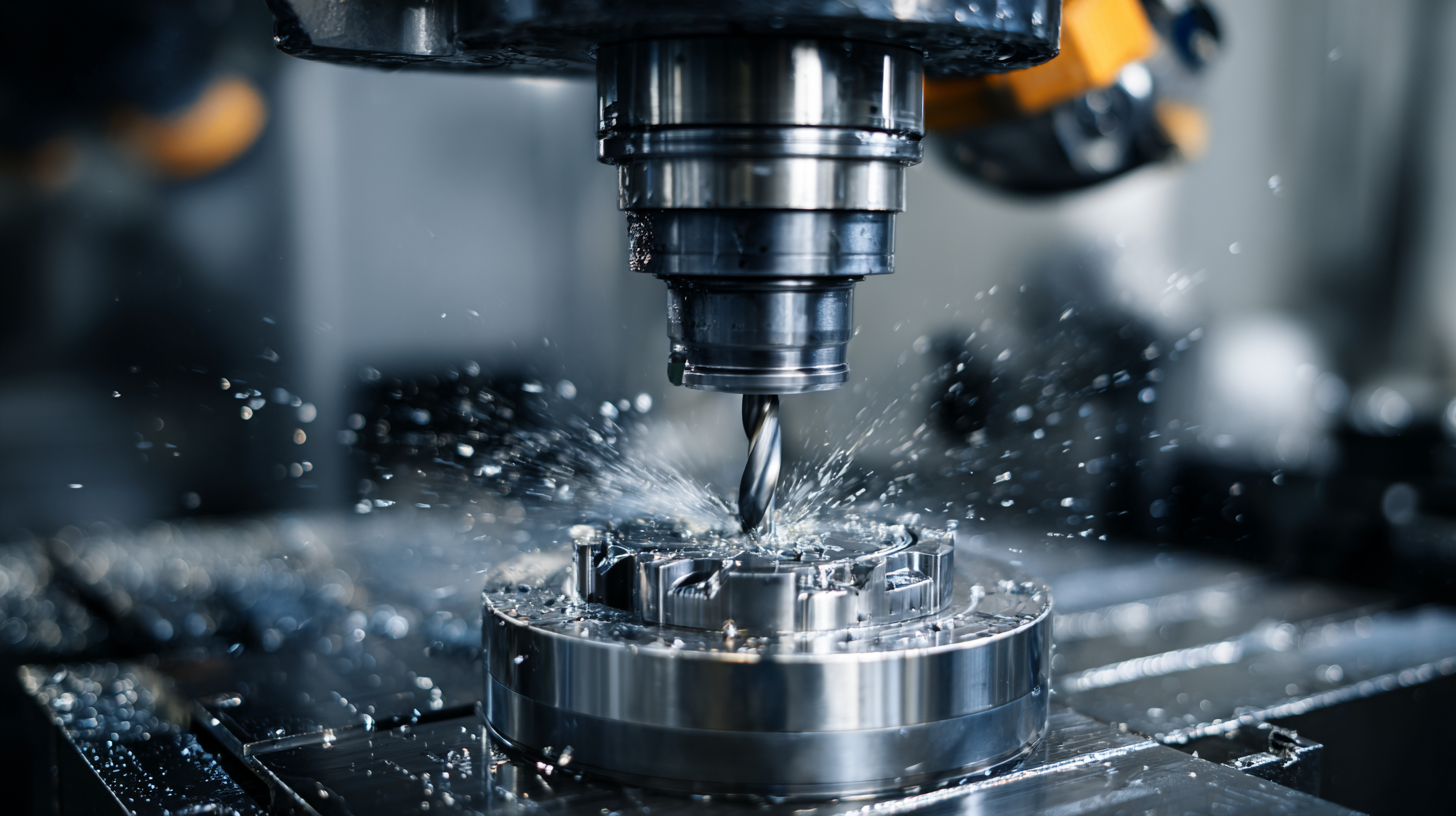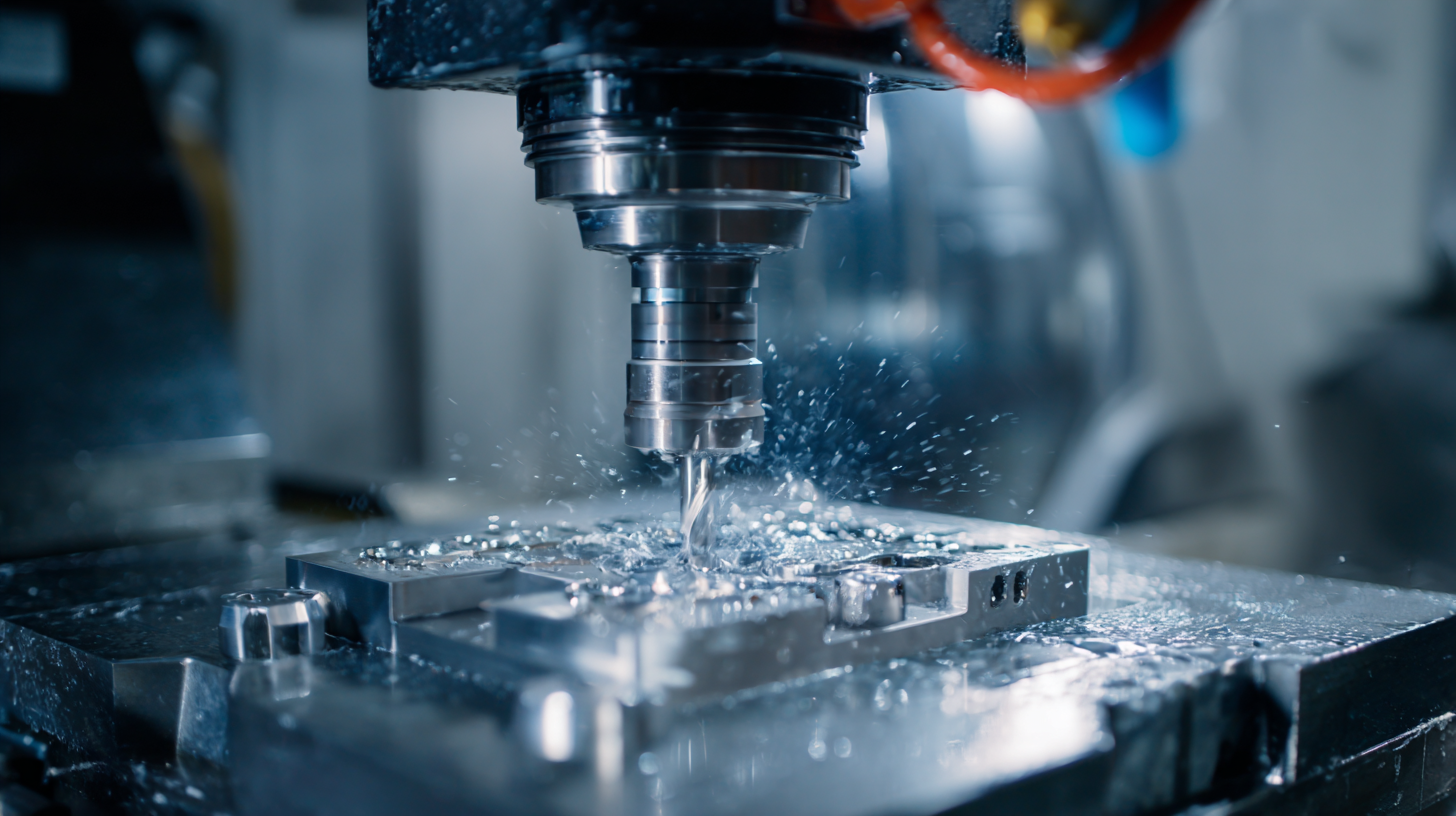CNC machining technology stands at the forefront of modern manufacturing, revolutionizing the production landscape with its unparalleled precision and efficiency. According to a recent report by Allied Market Research, the global CNC machining market is expected to reach $100 billion by 2027, growing at a CAGR of 6.6% from 2020. This growth is driven by the rising demand for innovative manufacturing techniques across various industries, including aerospace, automotive, and electronics. As companies increasingly adopt CNC machining technology to streamline operations and enhance product quality, the integration of advanced automation and AI-driven solutions is set to reshape traditional manufacturing paradigms. With its ability to minimize human error and optimize material usage, CNC machining technology is not only essential for maintaining competitive advantage but also crucial for meeting the fast-evolving challenges of the global market. The future of manufacturing is undeniably linked to the continuous advancement in CNC machining, paving the way for smarter, more effective production processes.

The rise of CNC (Computer Numerical Control) machining technology has significantly transformed manufacturing landscapes across various industries. According to a recent report by Markets and Markets, the CNC machine market is projected to grow from USD 67.3 billion in 2022 to USD 91.66 billion by 2027, highlighting an impressive CAGR of 6.5%. This rapid growth is a testament to the increasing demand for precision and efficiency in modern manufacturing processes. Businesses are realizing the benefits of CNC machining, such as reduced labor costs, enhanced productivity, and improved product quality, leading to a widespread adoption of this technology.
Tips for implementing CNC machining effectively in your manufacturing operations include:
As CNC machining continues to advance, its impact on sectors such as aerospace, automotive, and medical device manufacturing becomes increasingly profound. Studies indicate that companies utilizing CNC technology have reported a reduction in production time by up to 75% and a significant decrease in error rates. This transformation not only enhances operational efficiencies but also positions businesses to meet the growing demands of a global market focused on customization and rapid turnaround times.
The CNC machining industry is poised for significant expansion, driven by advancements in technology and increasing demand for precision manufacturing. According to recent market research, the global CNC machine market is expected to surge from $101.22 billion in 2025 to an astounding $195.59 billion by 2032, reflecting a robust compound annual growth rate (CAGR) of 9.9%. This growth is largely attributed to the rising need for high-quality, efficient production processes across various sectors, including automotive, aerospace, and consumer electronics.
In parallel, the global plate rolling machine market is projected to reach $638.37 million by 2034, growing at a CAGR of 5.1%. This upward trend underscores the importance of precision tools in modern manufacturing, where accuracy and efficiency are paramount. The increasing adoption of CNC technology is setting new benchmarks for production capabilities, enabling manufacturers to achieve greater versatility and customization in their operations. As these market dynamics unfold, stakeholders can expect significant opportunities driven by innovations in CNC machinery and precision tools.

The integration of artificial intelligence (AI) in CNC machining is revolutionizing the manufacturing sector by significantly enhancing precision and efficiency. According to a report by MarketsandMarkets, the CNC machine market is projected to reach $118.2 billion by 2025, driven largely by advancements in AI. These technologies allow for real-time data analysis, enabling machines to make instant adjustments during the machining process, thereby reducing errors and time spent on rework.
One of the most promising applications of AI in CNC machining is predictive maintenance. By utilizing machine learning algorithms, manufacturers can analyze operational data to foresee equipment failures before they occur. Research from Deloitte indicates that predictive maintenance can reduce machinery downtime by up to 30%, translating to substantial cost savings and improved productivity. Additionally, AI-assisted systems can optimize tool paths and cutting parameters, ensuring that each machining operation is not only faster but also maximally precise, achieving tolerances that were previously unattainable with traditional methods.
As the adoption of AI-driven CNC technologies accelerates, manufacturers are embracing these innovations to stay competitive. A study by Accenture found that companies implementing AI in their manufacturing processes could increase productivity by up to 40%. With such substantial potential for efficiency gains, the future of CNC machining looks promising as it becomes increasingly intertwined with AI advancements.
This chart illustrates the projected improvements in precision and efficiency in CNC machining technology integrated with AI from 2021 to 2025. As technology advances, both precision and efficiency are expected to significantly increase, indicating a transformative impact on modern manufacturing processes.
The global CNC machining industry is witnessing a transformative phase, driven substantially by advancements in technology that facilitate cost reduction. As the market is projected to grow from $132.63 billion in 2025 to $229.46 billion by 2032, with an impressive compound annual growth rate (CAGR) of 8.1%, manufacturers are increasingly investing in state-of-the-art CNC solutions that improve precision and efficiency. These innovations not only enhance operational capabilities but also allow for significant savings in production costs, making it an attractive option for businesses looking to optimize their manufacturing processes.
Moreover, the integration of smart technologies and automated systems in CNC machining is reshaping the landscape of modern manufacturing. Enhanced software solutions and advanced cutting techniques, such as laser and multi-tasking machines, empower manufacturers to achieve greater flexibility and responsiveness to market demands. As the industry evolves, the synergy between reduced operational costs and improved machining precision will undoubtedly position CNC technology as a cornerstone of competitive advantage in the global manufacturing arena.

As CNC machining technology continues to evolve, the focus on sustainability and eco-friendly practices becomes increasingly essential in modern manufacturing. Manufacturers are recognizing that implementing green technologies not only contributes to environmental preservation but also enhances brand reputation and can lead to cost savings. This movement towards more sustainable machining processes includes the use of biodegradable cutting fluids, recycling metal shavings, and optimizing energy consumption during production.
Tips: Consider investing in energy-efficient CNC machines that minimize electricity usage. Additionally, explore partnerships with suppliers who prioritize sustainability in their materials and processes to further enhance your eco-friendly practices.
Another emerging trend is the integration of advanced software that helps manufacturers monitor their operations for waste and energy consumption. By leveraging data analytics, companies can identify areas for improvement, reduce material waste, and streamline operations, leading to both economic and environmental benefits.
Tips: Regularly review and update your production protocols to incorporate insights gained from data analytics, ensuring that sustainability remains a priority in your CNC machining practices.
| Trend | Description | Impact on Sustainability | Technological Advancement |
|---|---|---|---|
| Additive Manufacturing | Integrating additive processes with CNC machining to reduce waste. | Reduces material waste significantly by using only necessary amounts. | Enhances flexibility in production and design. |
| Energy Efficient Processes | Implementing technologies that lower energy consumption. | Reduces carbon footprint of manufacturing operations. | Leads to operational cost savings. |
| Recyclable Materials | Using materials that can be recycled post-production. | Minimizes waste and promotes materials circularity. | Encourages innovation in material development. |
| Smart Manufacturing | Integration of IoT devices for real-time monitoring and optimization. | Improves efficiency and reduces resource waste. | Enhances data collection and predictive maintenance. |

© Copyrights Levil Technology Corp 2022